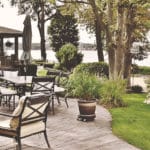How To Identify Dead Tree Branches
Identifying dead tree branches is not always easy. Sometimes, a branch may appear dead but it might be living. This is why experts from tree services are hired. However, there are some signs that you can look out for to determine whether a branch is dead or alive. Let’s discuss!
Signs That A Tree Or Branch Is Alive
Apart from looking out for signs that confirm dead tree branches, you should also be aware of the signs that point to branches that are alive. Plus, it is a lot easier to tell if a branch is alive when compared to looking out for signs that indicate it is dead. For instance, a living tree branch will have its outer bark intact without any cracks or splits. Plus, the branches are flexible and do not snap when gently bent.
Furthermore, there is no sawdust, frass, or decayed material on or beneath the tree. Even though all these signs still do not guarantee that your tree is striving but help you identify or develop an idea about your tree being alive. These signs could also be used by professionals during their initial inspection of the tree.
Signs That A Tree Or Branch Is Dead Or Dying
Fungal Growth Or Decay On A Tree’s Trunk Or Branches
If a tree has become weak or is about to die, it will not generate new growth. As a result, the external bark is not replenished by the outward growing cell layers and loses its flexibility and thickness. Moreover, the bark layer that was once impervious now turns porous and dry and allows the fungus to anchor itself and grow.
With that said, if you observe fungal growth on your tree, especially turkey tail fungus, you should know that your tree is dead since it only grows on dead stumps and trees. Plus, fungal growths such as strands or mushrooms only appear and develop once an infection has occurred and has killed the host tree.
And another proof of a tree or branch is dead is by performing a detailed examination of pruning a branch and cutting it crosswise to inspect the internal decay.
Insect Damage And Falling Leaves
Insect poop or frass will appear if a tree branch is dead. This is because insects take accommodation under the tree bark or within a branch and live off the dead tree or branch. In addition to that, the existence of frass means that the tree was not able to fend off insects, indicating a weak tree.
On the other hand, if you observe that your tree is dropping leaves and twigs during the growth season, it might indicate that the tree is extremely weak and not supporting growth. It could also be that the tree’s health is so poor that it can hardly fight against a disease or insect damage. Or, it might be that the disease was so severe that it killed the internal vascular system that distributes both water and nutrients to all parts of the tree.
However, during the summer season, your tree can shed some leaves, which is a sign of heat stress. But that does not necessarily mean that the tree is drying. It simply needs proper maintenance and looking after since the extreme temperature takes a toll on its health.
Buds On Twigs
Trees are efficient resource management machines. Some will develop flower buds and leaves months before they are scheduled to open. Additionally, developed buds usually wait through winter before opening in spring. Therefore, the condition of the buds gives you a good idea or indication of whether a tree is dormant or dead.
If your tree is alive and healthy, it will have shiny, smooth, and well-formed buds. However, if the buds are dry and shriveled, it means the tree’s branch or twig is not receiving water and nutrients.
Final Word
Identifying a dead or a weak tree is sometimes complicated but you can develop a close idea of its state and condition by following the tips mentioned above. And if you are still not able to conclude, you should consult an arborist, who can perform an extensive inspection, maybe helping the tree to regain its strength and life during the process, so that you do not have to take it down. If it’s a diseased tree, look for tree removal companies Kensington to cut down the tree.
Next PagePrevious Page


